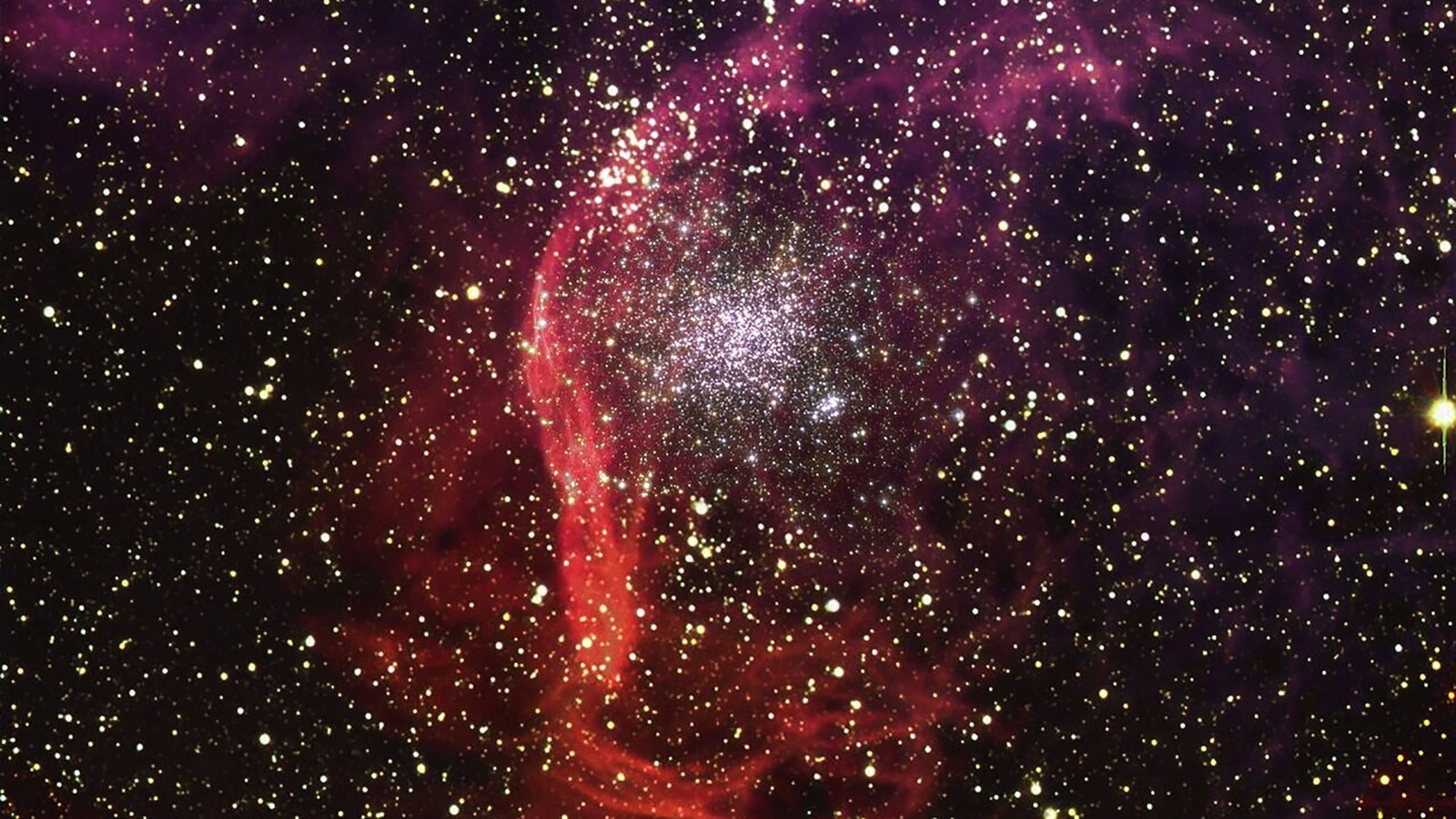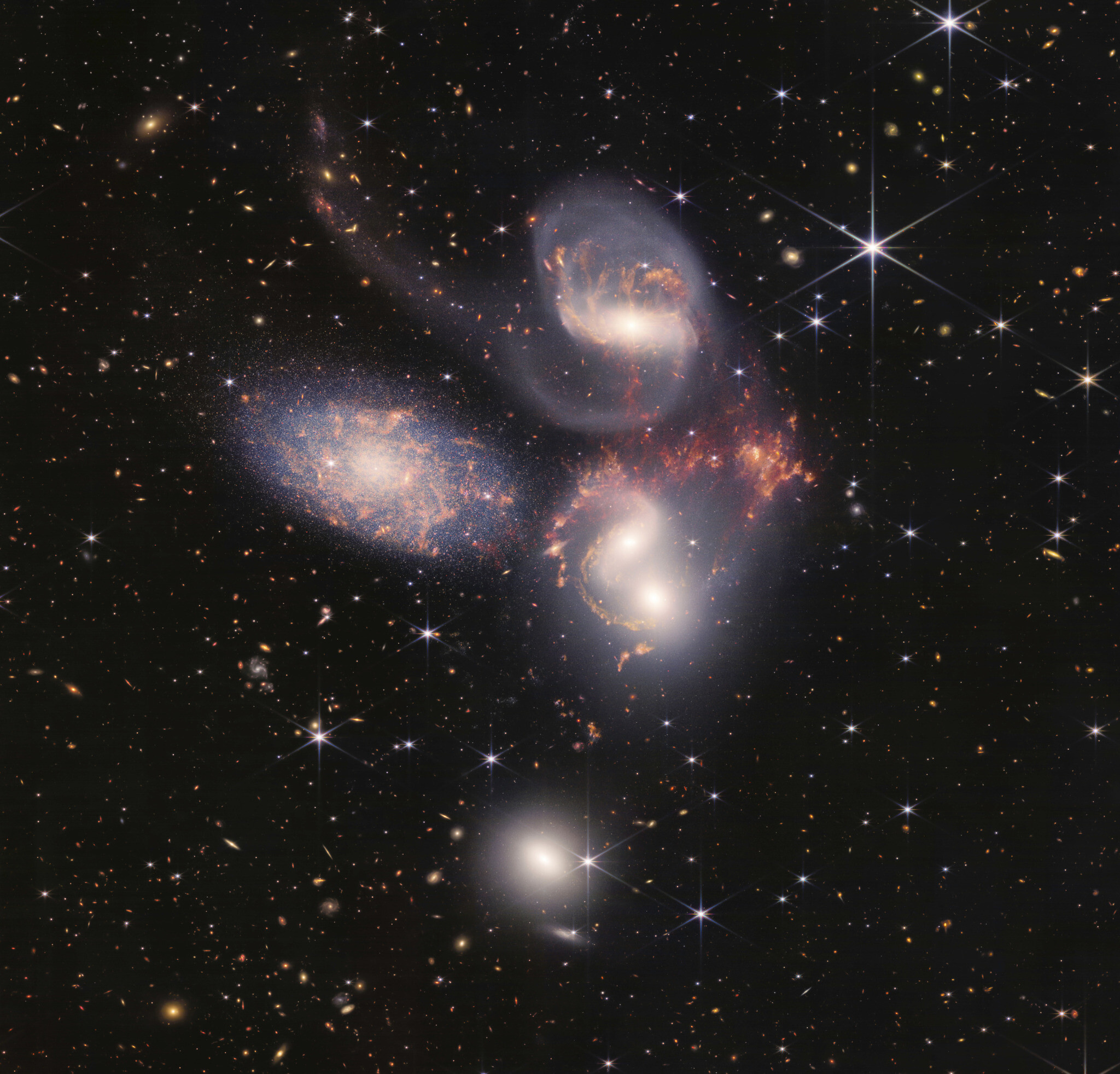A spectacular map, produced by the European radio telescope LOFAR, shows a high-resolution image of a part of the universe. It collects more than 4.4 million galaxies, of which a million were completely unknown, which are billions of light years from Earth.
After seven years of observations and data analysis, an international team of scientists has mapped more than a quarter of the northern sky using the Low Frequency Array (LOFAR), a pan-European radio telescope.
The map reveals an astonishingly detailed radio image of more than 4.4 million galaxies, about a million of which were previously completely unknown.
It offers a very dynamic picture of our Universe which, as has been made public, allows anyone to see the most exotic wonders of our intriguing Universe in a new light.
This is what a part of the Universe looks like billions of light years from Earth. LOFAR
LOFAR is a large network of radio telescopes located mainly in the Netherlands. It is made up of 50,000 antennas, grouped into 52 stations spread over 5 European countries: Holland (which has 60% of them), Germany, France, Great Britain and Sweden.
Recomposed image
Each station captures radio waves through its network of antennas, which are then combined to reconstruct a high-resolution image of the universe thanks to a set of interferometric techniques.
To make the new map, the researchers gathered 3,500 hours of observations that occupy 8 petabytes of memory, equivalent to the data storage capacity of 20,000 laptops.
Most of the celestial objects reflected in the map are billions of light years from Earth and are usually distant galaxies that harbor huge black holes inside them that contain thousands or millions of solar masses.
These huge black holes, by absorbing surrounding stars and other cosmic objects, emit strong radio radiation. Then they show a special brightness that is what the LOFAR antennas capture.
Only the beginning
The data thus obtained can be used to search for a wide range of signals, such as those from nearby planets or galaxies, to faint signatures in the distant Universe, the researchers explain.
According to astronomer Timothy Shimwell of Leiden University in the Netherlands, this map is just the beginning .
“It only accounts for 27% of our entire study. It should lead to many other scientific breakthroughs in the future, about how the largest structures in the Universe grow, how black holes form and evolve, and even the physics involved in the formation of black holes.” stars in distant galaxies, as well as the most spectacular phases in the life of stars in our own Galaxy,” says Shimwell.
The biggest studio
The map represents the largest ever study of colliding star clusters within hundreds to thousands of galaxies, offering new insights into the magnetic fields and high-energy particles in the largest structures in the Universe.
It reflects many unique aspects of the universe, such as curious signals from nearby stars that may be induced by orbiting exoplanets, as well as pinpointing the slowest-spinning pulsar that challenges current theories describing such objects.
The map also makes it possible to observe so-called “jellyfish galaxies”, which shed material as they travel through their surrounding medium, as well as witness black hole eruptions that shape their local environment.
Cosmic web
It also probes the fabric of the cosmic web through the locations and shapes of galaxies, and sheds new light on the most distant supermassive black holes in the Universe.
Finally, it includes the discovery of numerous radio galaxies of all shapes, sizes, and ages, which a citizen science project created to help find new black holes in this zoo of objects.
While these discoveries are already refining our understanding of the Universe, it is also clear that the work that has been done to date only scratches the surface of what is to come, the researchers conclude.
Source: amazingastronomy.thespaceacademy.org












